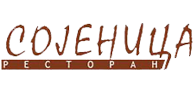Board meetings can be lengthy events that require a lot of time devoted to listening to reports and discussions. Depending on the way you conduct your board meetings, it is possible that there’s not enough time for making decisions.
Organization and discipline are vital for maximizing the value of your board meetings. This means creating an agenda, establishing the space for meetings, and then disseminating all the relevant materials prior to the meeting. This will allow your board members to look up opinions, prepare for the meeting and ask questions. Then when the board discussion begins, they will arrive with a good amount of understanding and confidence that they have contributed to the final outcome.
The process of running a board meeting starts with a welcoming message from the officer to the attendees. Afterward, the chair addresses the old, new and other business in a chronological order. Old business includes items the board has previously deliberated and voted on or against. New business refers to anything the board hasn’t discussed before and is currently considering for approval. Other items include things that aren’t scheduled such as appointing committees, or announcing director appointments.
After the discussion, the chairman submits each motion to vote. This includes changing the articles of incorporation, authorizing certain transactions, and ratifying decisions taken by directors. It also involves choosing strategies and approving plans of actions. It is beneficial to establish KPIs that are in line with the goals of your business and are quantifiable to aid your board members in deciding on its strategy. These KPIs can be used to gauge the effectiveness of the strategies that your board is deliberating on.
boardmeetingpro.blog/making-the-long-board-meeting-process-more-effective/
